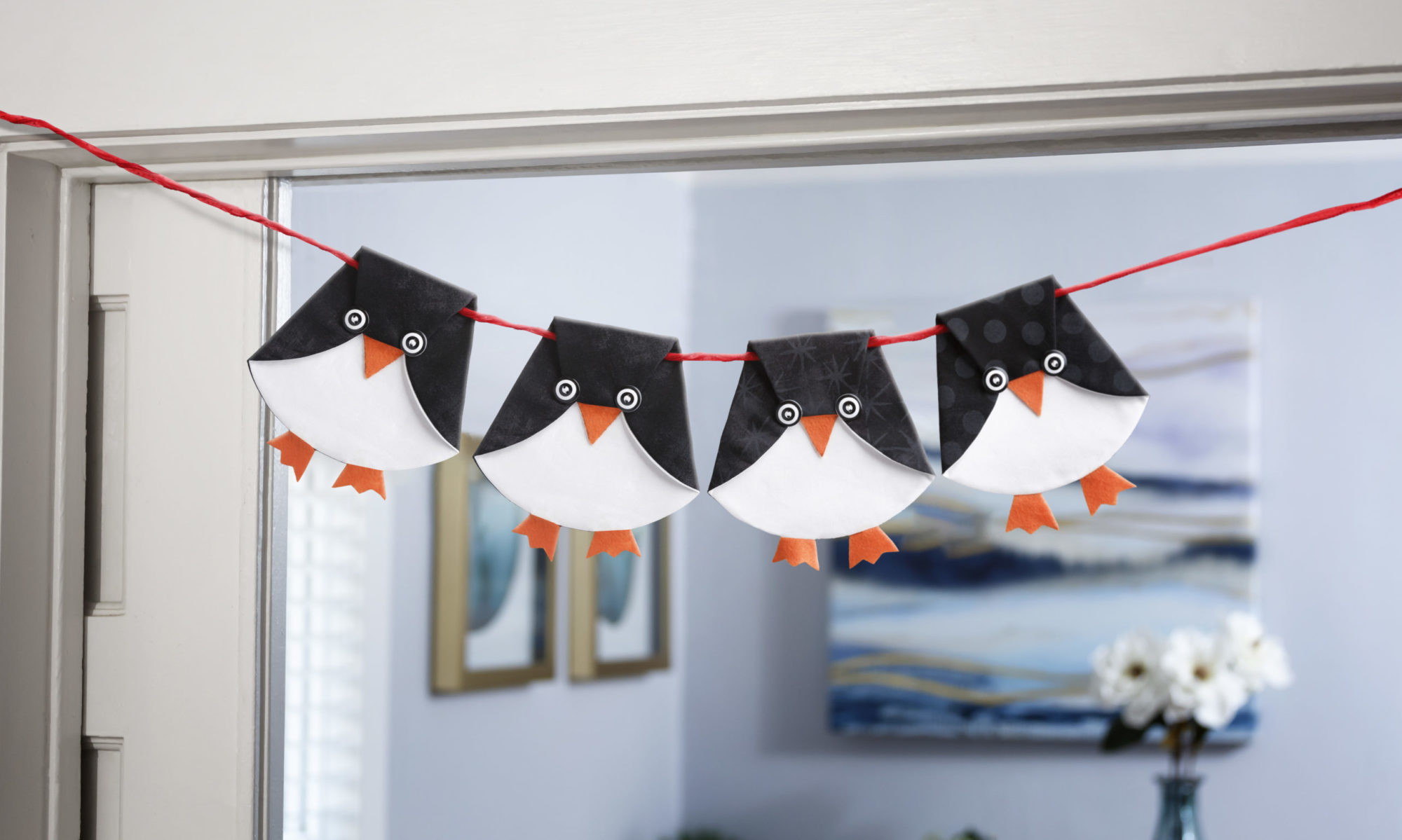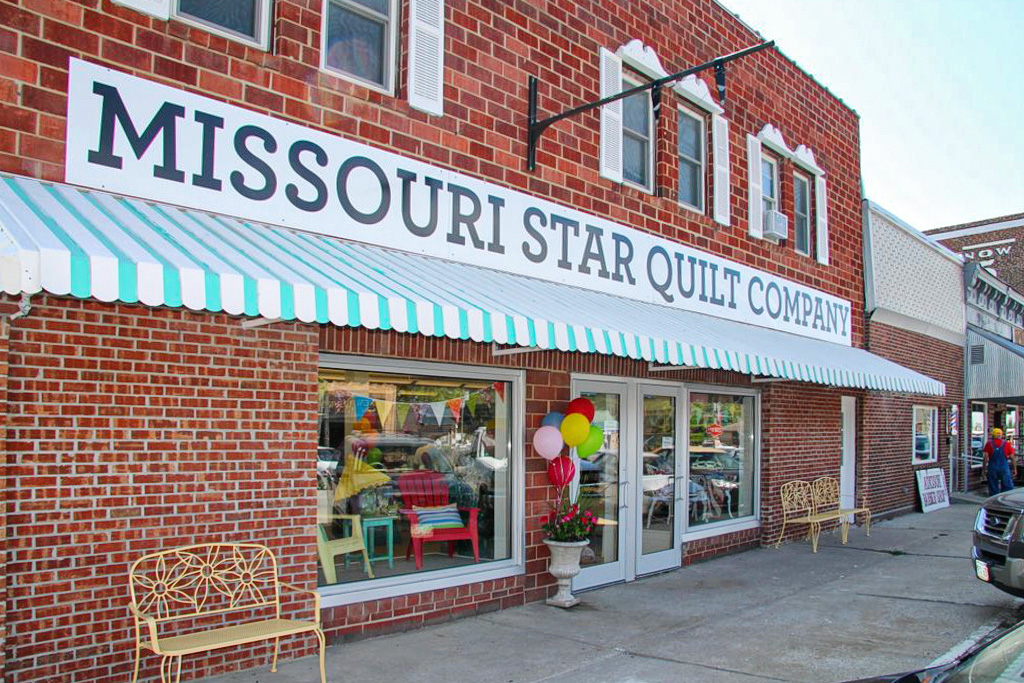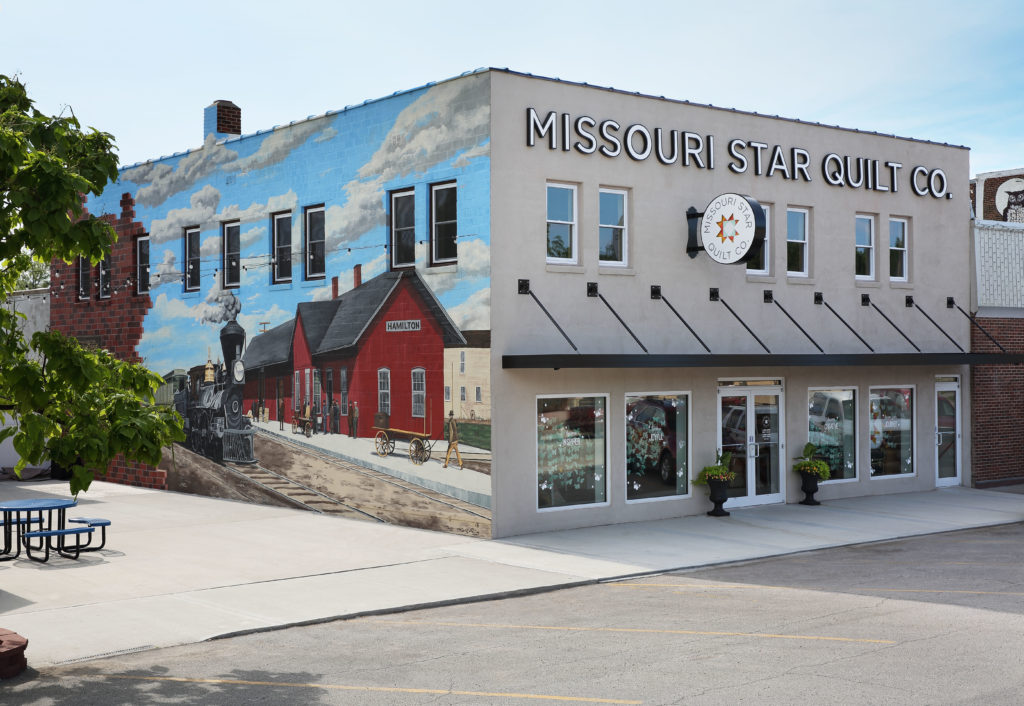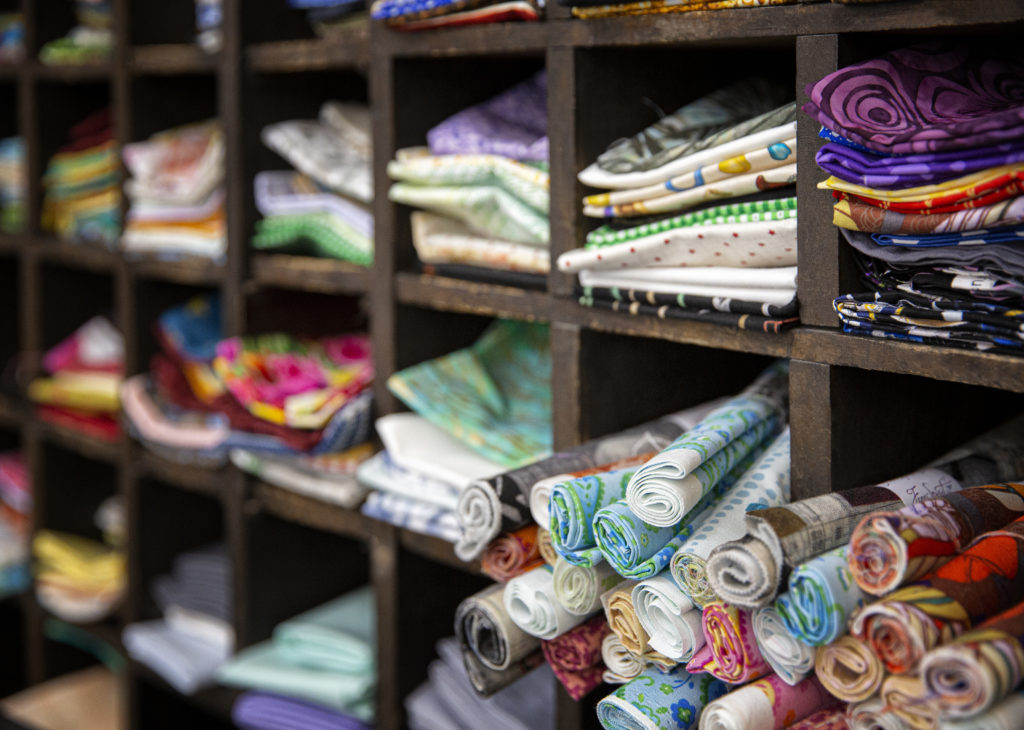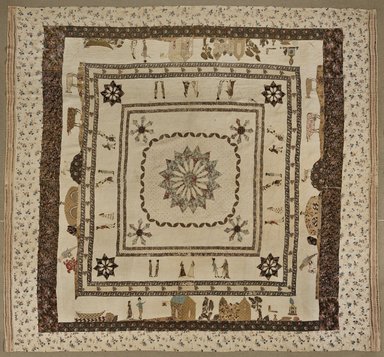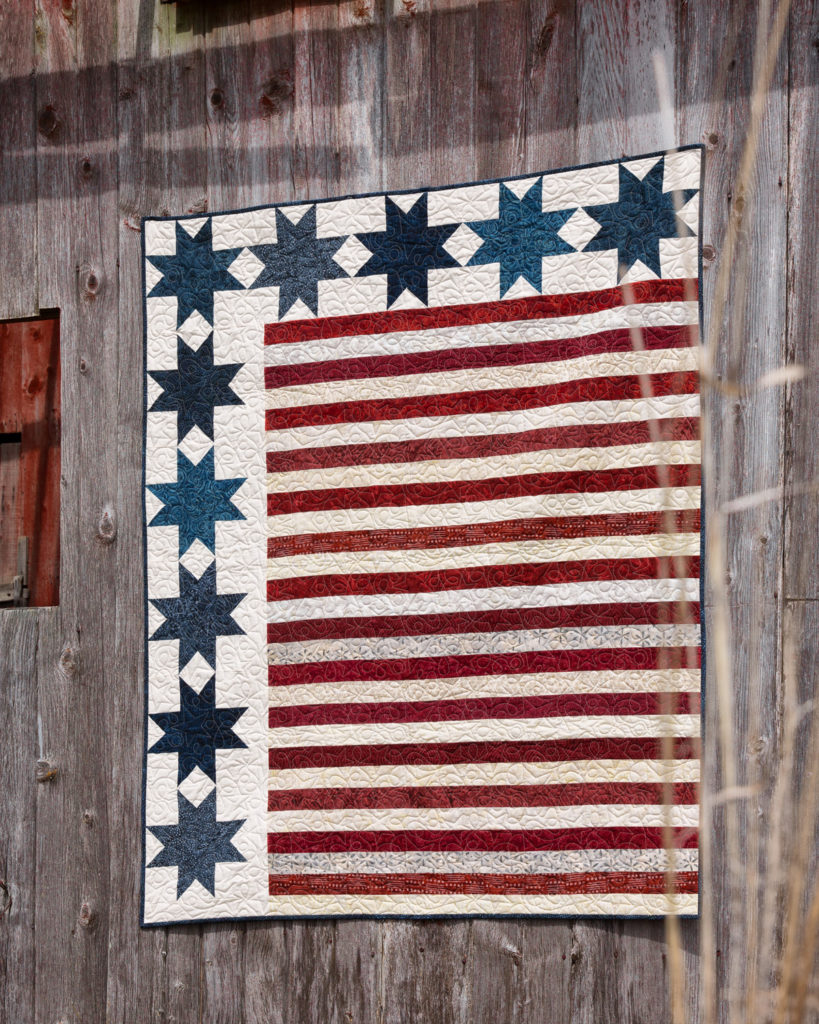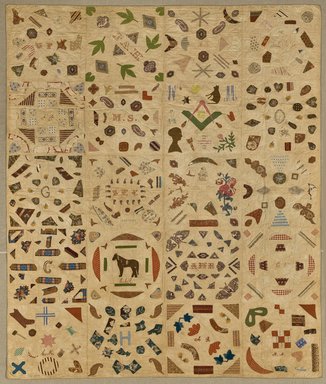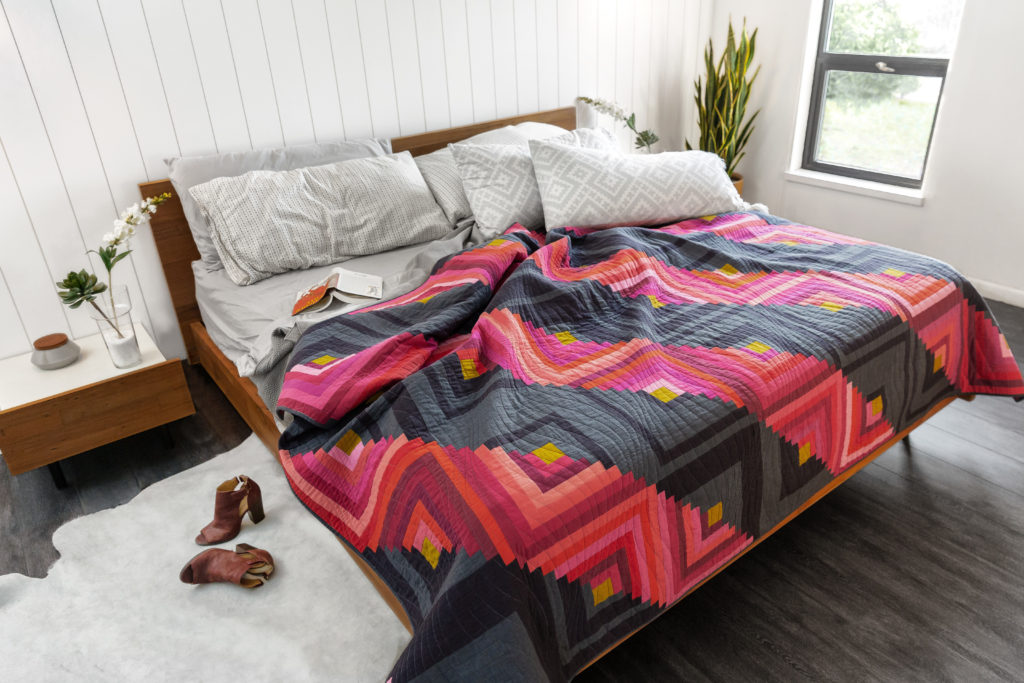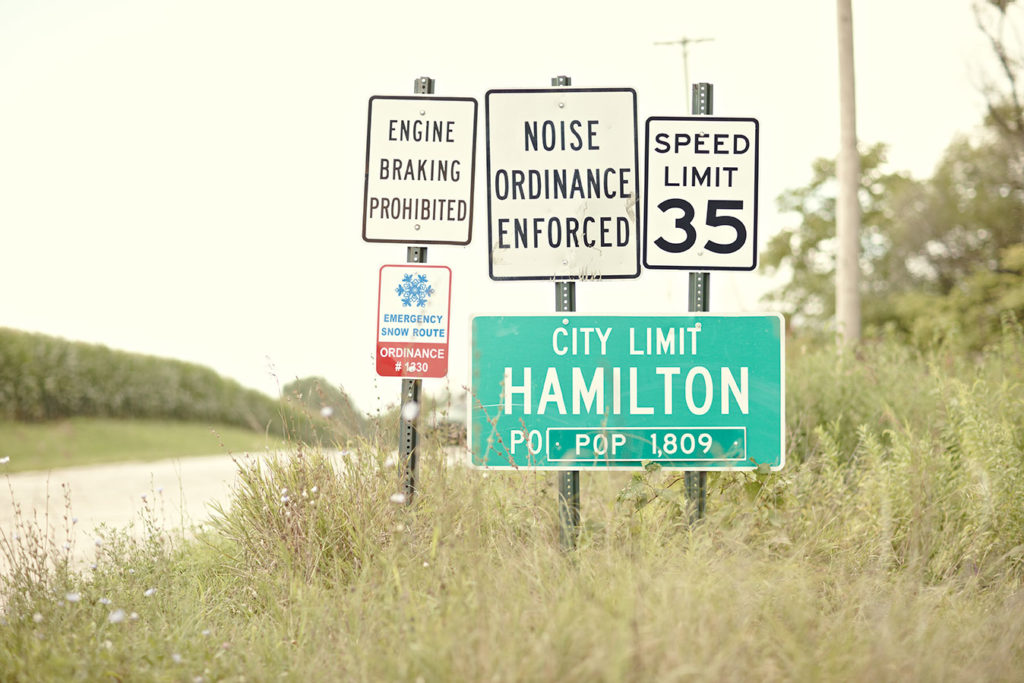
Nestled in the Northwest corner of the Kansas City metropolitan area is the town of Hamilton, Missouri. The tiny town of 1,809 residents has long been known as the birthplace of American businessman James Cash Penney who would go on to revolutionize the retail market with his self-named department store chain, J C Penney. Until just a decade ago, Hamilton remained a quiet rural community similar to many in the Northwest Missouri area. Businesses came and went and generations of residents continued to call this area their home, proudly remember their past with the annual Steam and Gas Engine Show as well as J.C. Penney Day festival in September.
In November 2008, Missouri Star Quilt Co. was founded by Jenny Doan and family in Hamilton. No one could have imagined the impact this quiet little quilting shop would have upon not only the town, but the world as a whole. Now Hamilton has a new reason to celebrate. Quilt Town, U.S.A. has become a destination for makers and has been called the “Disneyland of Quilting”. Last week you had the opportunity to learn about the History of Missouri Star Quilt Co., but the history of what is now known as Quilt Town, U.S.A. goes back even farther. To celebrate National Quilting Month, we want to take a moment to acknowledge the town that we now call home; a place that has allowed a start-up quilting shop to thrive and grow while inspiring countless of new creators along the way and in turn, has helped keep the art of quilting alive and well.
All Aboard
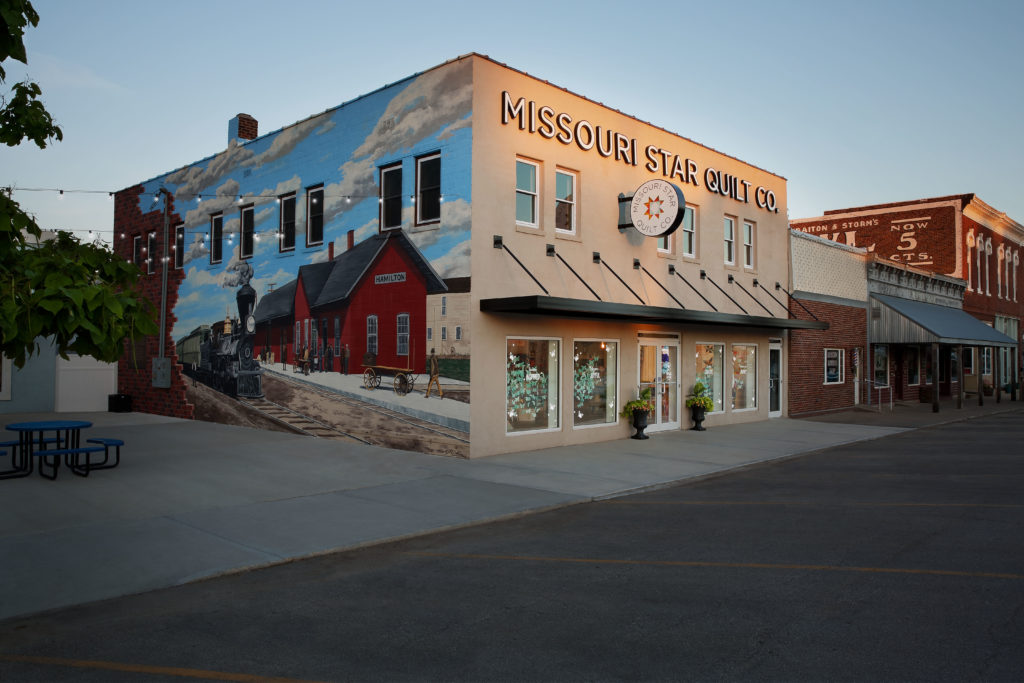
According to History of Caldwell and Livingston Counties, Missouri, Hamilton owes its existence largely to the Hannibal & St. Joseph Railroad. In 1855 Albert Gallatin Davis built the first home in Hamilton as a township was being considered due to the news of the railroad’s forthcoming arrival. Small railroad towns were a common development in the mid 1800’s as the new method of transportation allowed people to have access to goods and services that would have previously been difficult to acquire. Hamilton would begin to thrive thanks to these new developments in transportation and the town would reach a population of 1,800 (close to it’s current population today!) in the 1880’s (History of Caldwell and Livingston Counties, Missouri).
An Early Entrepreneur
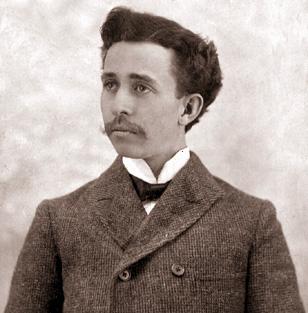
In 1875 James Cash Penney was born in Hamilton. Penney would later start the retail chain J C Penney which still exists to this day. Hamilton was proud of the accomplishments of one of their own and celebrates his memory each year with the annual J C Penney Days Festival. If you’ve kept up on your Missouri Star history as well, you may notice that one of our shops is named in honor of Penney as well! In order to better acknowledge the global contributions of this entrepreneur, Penney’s boyhood home has since been moved into the town limits and has become a museum which can be visited to this day.
A New Frontier
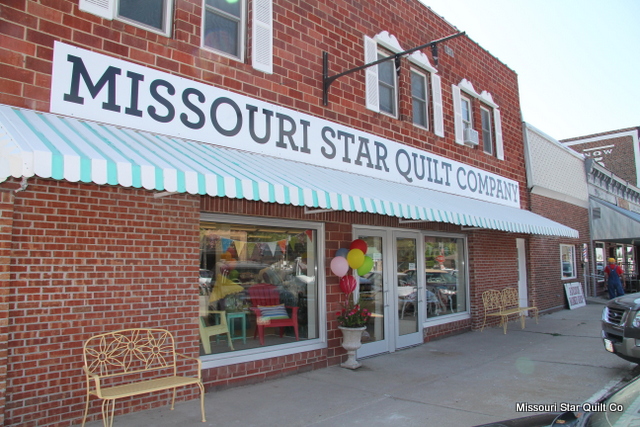
In November 2008 the Missouri Star Quilt Co. came to Hamilton. Originally a project to help support the Doan family after financial hardship, the company would soon blossom into what we know today, Quilt Town, U.S.A. In 2015, the Doans and Missouri Star Quilt Co. were named the Small Business Person of the Year from the Small Business Administration and their accomplishments didn’t end there. Hamilton has since become a destination for quilters from all over the world, opening a multitude of new crafting related shops, restaurants and even a retreat center to house tourists coming to visit the town.
Celebrities, politicians and quilters of all skill levels have made the journey to visit Quilt Town, U.S.A. To celebrate the art and history of quilting, you can even visit our very own Quilt Museum while in town; or get your picture taken in from on the World’s Largest Spool of Thread! Every week Jenny produces a new quilting tutorial which is uploaded to YouTube that allows even brand new quilters the opportunity to create a time-honored work of art that keeps the tradition of quilting alive. As Missouri Star grows, so does the opportunities to inspire the creativity of others. In 2020 Missouri Star began it’s latest series, The Final Stitch, where host Natalie Earnheart (Jenny’s daughter) answers tough questions from quilters and demonstrates helpful tips to finish quilting projects.
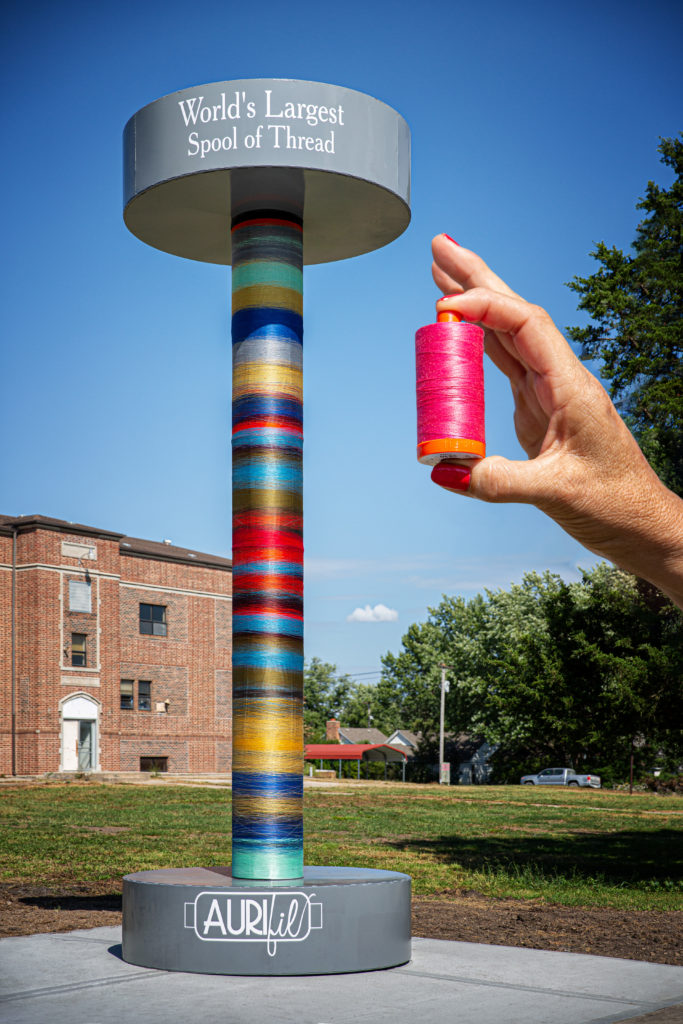
The Doan’s story has become one of legend, a true embodiment of the American Dream in which a family bonds together to create their own opportunity while helping to build the community of crafters around them, while also rebuilding the town which they now call home. Hamilton, Missouri is a very different place than it was just a few years ago. The long forgotten excitement of the railroad has again returned to Northwest Missouri as a world of new opportunities and advancements buds around a local community. Quilt Town, U.S.A. is here to stay and you won’t believe what’s in store next!
Still want to know more about the History of Quilt Town, U.S.A.? Check out this incredible video from our friends at Stripe!
